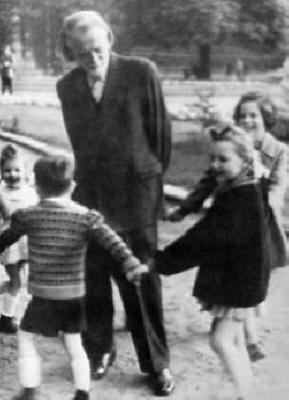- DeVries, Peter. “Reevaluating Common Kodaly Practices.” Music Educators Journal 88:3 (November 2001) 24-27.
- Dobszay, L. “The Kodaly Method and Its Musical Basis.” Studia Musicologica Academiae Scientiarum Hungaricae 14:¼ (1972) 15-33.
- Eösze, László/Mícheál Houlahan, Philip Tacka: ‘Kodály, Zoltán’, Grove Music Online ed. L. Macy (Accessed 26 November 2006).
- Landis, Beth. The Eclectic Curriculum in American Music Education: Contributions of Dalcroze, Kodaly, and Orff. Washington: Music Educators National Conference, 1972.
- Russell-Smith, Geoffry. “Introducing Kodaly Principles into Elementary Teaching.” Music Educators Journal 54:3 (November 1967) 43-46.
- Shehan, Patricia K. “Major Approaches to Music Education: An Account of Method.” Music Educator’s Journal 72:6 (February 1986) 26-31.
- Turpin, Douglas. “Kodaly, Dalcroze, Orff, and Suzuki: Application in the Secondary Schools.” Music Educators Journal 72:6 (February 1986) 56-59.
KODALY In his own words . . .
Let us take our children seriously! Everything else follows from this...only the best is good enough for a child. We should read music in the same way that an educated adult will read a book: in silence, but imagining the sound. Real art is one of the most powerful forces in the rise of mankind, and he who renders it accessible to as many people as possible is a benefactor of humanity.
| ||||||||||||||||
Basics The Kodaly method or concept approaches music learning through the lens of child development, in the sequence in which the child learns. For example, the first rhythms taught are those that associate with the natural movement of walking (quarter notes) and running (eighth notes), not the seemingly simpler duration of a whole note. Pedagogical tools of the method
Materials of the method
| ||||||||||||||||
Links/References | ||||||||||||||||
| ||||||||||||||||
Created and maintained by Vicky V. Johnson
|
